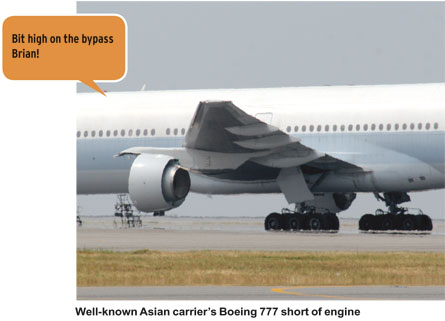Operationally challenged? Stewart Sidewinder: "I just had a briefing about a new on-the-move communications system for the US Marine Corps. This miniaturised command post is called the Command Operations Center, or COC for, um, short." Rex Stocks: "So I suppose you want me to run a story with the headline: 'USMC deploys small COC'?" Sidewinder: "Would it help if I told you that any single USMC COC can be quickly deployed, but requires adequate protection, especially in regions with a high-threat biological environment. The company's brochure also notes that the COC features a soft-skin exterior, although its payload is hardened for the conditions of deployment?" Stocks: "Not really."
|
Sucking it down In New Zealand and other parts of the grape-growing world, they use choppers to protect vineyards from frost by sucking down warmer air from above the inversion layer and blowing it down onto the crops. Strange but true. It can be boring and tiring work. In fact, here's an extract from the guidance notes issued to pilots by Peter Garden Helicopters: "The pilot must be aware of optical illusions associated with night-flying operations, some of which can be exasperated when working over a crop with bird covers in place." Now, now. Calm down and have a nice glass of Sauvignon when you land. Raven v crow Bluey Strewth, our special unmanned bird watcher, reports from downunder: Aerovironment's recent achievement of legally flying a mini-UAV within the bounds of an Australian capital city may have revealed unexpected counter-UAV concerns. The flights carried out in Brisbane, Queensland, used the Aerovironment RQ-11B Raven. To the surprise of many, the Ravens were attacked several times by crows -- a large Australian native bird which is closely related to the North American raven. Not only did this raise the spectre of "Blue on Blue" engagements, but more significantly it revealed that the crows evolved their counter-UAV tactics over the three-day period. Launching from a perching position on the roof of a performing arts centre overlooking the Brisbane River, the crows initially attempted dive assaults on the UAV from above and behind as the aircraft came in low to land in a waterside park area. The crows then changed to a tight spiral dive attack against the nosecone after discovering the aircraft used a pusher propeller. Australian defence personnel observing the engagements noted that the strikes may represent critical guidance for the development of a counter-small UAV capability based on trained eagles. |
|
Source: Flight International

























